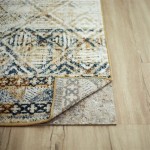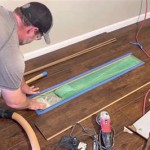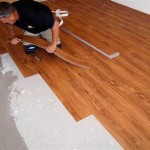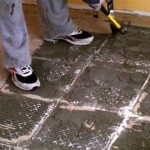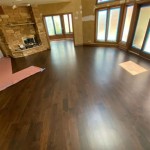Are All-Weather Floor Mats Worth It In France?
Drivers in France face diverse weather conditions, from the snowy Alps to the sunny Mediterranean coast. This variability raises the question of whether all-weather floor mats are a worthwhile investment. This article will explore the benefits and drawbacks of all-weather mats, considering the French climate and driving habits, to help drivers make an informed decision.
All-weather floor mats, typically made from rubber or thermoplastic elastomer (TPE), are designed to protect a vehicle's interior from dirt, mud, snow, and water. Unlike carpeted mats, they feature raised edges and textured surfaces to contain spills and debris. This design helps prevent stains and damage to the underlying carpeting, preserving the vehicle's resale value.
France experiences a range of weather patterns. While the Mediterranean coast enjoys a predominantly dry climate, other regions, like Brittany and Normandy, experience significant rainfall. The mountainous regions, including the Alps and Pyrenees, regularly see snowfall during winter. These varied conditions make the interior of a vehicle susceptible to moisture and dirt tracked in on shoes.
The practicality of all-weather mats becomes evident when considering the activities common in France. Outdoor pursuits such as skiing, hiking, and cycling are popular, and these activities often involve traversing muddy or snowy terrain. All-weather mats provide a barrier against this dirt and moisture, keeping the vehicle's interior clean and reducing the need for frequent cleaning.
Beyond protection from the elements, all-weather mats offer several other advantages. They are generally easier to clean than carpeted mats. A simple rinse with water or wiping with a damp cloth is often sufficient to remove dirt and grime. This ease of maintenance is particularly beneficial for families with children or pet owners.
Durability is another key feature of all-weather mats. Constructed from robust materials, they can withstand heavy use and harsh conditions. This longevity makes them a cost-effective investment in the long run, as they are less likely to need replacing compared to carpeted mats that can wear and stain easily.
While all-weather mats offer numerous benefits, some potential drawbacks should be considered. Aesthetics is one such factor. While designs and colors are becoming more varied, all-weather mats may not offer the same visual appeal as carpeted mats, which are often chosen to complement the vehicle's interior. Some drivers may find the rubber or TPE material less aesthetically pleasing.
Another potential concern is the odor that some all-weather mats can emit, particularly when new. This "off-gassing" of volatile organic compounds (VOCs) can be unpleasant, though the smell typically dissipates over time. Choosing mats made from low-VOC materials can mitigate this issue.
The fit of all-weather mats is also an important consideration. Ill-fitting mats can shift during driving, potentially interfering with the pedals. It's crucial to select mats specifically designed for the vehicle's make and model to ensure a secure and safe fit. Many manufacturers offer custom-fit options for a precise match.
Cost is another factor that influences purchasing decisions. All-weather mats are generally more expensive than standard carpeted mats. However, their durability and ease of cleaning can offset this initial higher cost over time by reducing cleaning expenses and the need for replacements.
The decision of whether to invest in all-weather mats in France depends on individual needs and priorities. Drivers who frequently encounter adverse weather conditions, participate in outdoor activities, or transport children and pets will likely find all-weather mats a valuable addition to their vehicle. The enhanced protection they offer, combined with ease of maintenance and durability, makes them a practical choice for preserving the vehicle's interior and resale value.
Conversely, drivers who primarily drive in urban areas with mild weather and prioritize aesthetics may find carpeted mats sufficient. Ultimately, weighing the benefits and drawbacks in relation to individual driving habits and preferences will determine whether all-weather floor mats are a worthwhile investment.
An important factor to consider when evaluating all-weather mats is the specific material they are made from. Rubber mats are a common and affordable option, providing good protection against water and dirt. However, they can be heavier and less flexible than other materials. TPE mats offer a lighter and more flexible alternative, often with superior resistance to extreme temperatures and chemicals. They also tend to have a less pronounced odor compared to some rubber mats.
Finally, the intended use of the vehicle plays a significant role in determining the suitability of all-weather mats. For vehicles used primarily for commuting in urban environments, standard carpeted mats might suffice. However, for vehicles frequently used for outdoor activities, transporting pets, or driving in regions with harsh weather, the added protection of all-weather mats becomes a more compelling advantage.

All Weather Floor Mats Accessoires D Origine Audi France

Oedro Floor Mats Set For 2024 Toyota 4runner Not Fit 7 Seats Unique Black Tpe All Weather Guard Full Liners

Tesla Model 3 Vs Y Can You Use The Same Floor Mats Hubs

3w Car Mats Offical

Oem All Weather Floor Mats For 2024 Tacoma

Floor Mats Golf Temu France

3w Car Mats Offical

Duster Ii 2024 Extreme Version Rubber Mats With High Edges New Logo 749m61429r Dacia Original

Entrance Mats Are A Must For Rainy Days Coba
Phantom Custom Car Floor Mats Costco
See Also
